- Tips to Speed Up Tomato Ripening at the End of the Season
- 1. Bring in the Green Tomatoes
- 2. Choose the Right Storage Location
- 3. Utilize Ethylene Gas
- 4. Check Regularly for Ripe Tomatoes
- 5. Enhance Ripening with Paper Bags
- 6. Use the Surrounding Ripeness Technique
- 7. Manage Proper Air Circulation
- 8. Prune Excessive Foliage
- Conclusion
- Enhancing Tomato Ripening Process on the Vine
- 1. Choose the Right Variety
- 2. Provide Adequate Sunlight
- 3. Prune the Plants
- 4. Monitor Watering
- 5. Use Organic Fertilizers
- 6. Remove Excess Foliage
- 7. Harvest Partially Ripe Tomatoes
- Using Ethylene Gas to Accelerate Tomato Ripening
- Methods of Ethylene Gas Application:
- Precautions when using Ethylene Gas:
- Proper Nutrition to Hasten Tomato Ripening
- 1. Balanced Fertilization
- 2. Phosphorus Boost
- 3. Compost and Organic Matter
- 4. Calcium Supplement
- 5. Liquid Fertilizers
- 6. Regular Watering
- 7. Mulching
- 8. Pruning and Proper Plant Spacing
- Providing Ideal Environmental Conditions for Ripe Tomatoes
- Temperature
- Sunlight
- Air Circulation
- Humidity
- Protection from Extreme Weather
- Regular Harvesting
- Storage
- Harvesting Tomatoes at the Right Time for Faster Ripening
- 1. Color
- 2. Firmness
- 3. Stem Connection
- 4. Flavor
- Using Paper Bags to Speed Up Tomato Ripening Off the Vine
- Utilizing Ethylene-Producing Fruits to Ripen Tomatoes After Harvest
- Here are some steps you can take to use ethylene-producing fruits:
- Storing Tomatoes Properly to Promote Quick Ripening
- “Question-Answer”
- How can I speed up tomato ripening on the vine?
- What can I do to speed up tomato ripening after harvest?
- Can I use a tomato ripening spray to speed up ripening?
- How long does it usually take for tomatoes to ripen on the vine?
- Why are my tomatoes taking so long to ripen?
- “Video” 5 Tomato Grow Mistakes To Avoid
As the end of the growing season approaches, many gardeners find themselves with a surplus of green tomatoes. While green tomatoes can be delicious in their own right, there’s nothing quite like the taste of a ripe, juicy tomato straight from the vine. Fortunately, there are a few tricks you can try to help speed up the ripening process and enjoy those garden-fresh tomatoes before the frost sets in.
Leave the tomatoes on the vine: One of the simplest and most effective ways to speed up tomato ripening is to leave the fruits on the vine as long as possible. As the days get shorter and cooler, the tomatoes will continue to ripen, albeit at a slower pace. Additionally, the longer the fruits spend on the vine, the more flavorful they tend to become. So, resist the temptation to harvest all your green tomatoes at once and instead, let nature take its course.
Give the green tomatoes a boost: If you’re facing an impending frost and don’t have time to wait for the tomatoes to ripen naturally on the vine, you can give them a helping hand. One method is to pick the green tomatoes and place them in a brown paper bag, along with a ripe apple or banana. These fruits release ethylene gas, which speeds up the ripening process. Be sure to check the bag daily and remove any tomatoes that have ripened to avoid over-ripening or spoilage.
Optimize temperature and humidity: Tomatoes ripen best in temperatures between 68 and 77 degrees Fahrenheit (20-25 degrees Celsius) and with a relative humidity level of around 85%. If the temperatures in your area have already dropped significantly, consider bringing your green tomatoes indoors to a warmer spot. Similarly, if the air in your home is dry, you can place a tray of water near the tomatoes to increase the humidity and promote ripening.
Prune and clean the tomato plants: As the end of the growing season nears, it can be helpful to prune back some of the foliage on your tomato plants. This allows more sunlight to reach the fruits, which can encourage faster ripening. Additionally, removing any diseased or yellowing leaves can help redirect the plant’s energy towards ripening the remaining tomatoes. Be sure to clean up any fallen leaves or debris around the plants to reduce the risk of disease and pests.
By following these tips, you can help ensure that your green tomatoes make it to their ripe, flavorful form before the gardening season comes to a close. Whether you choose to leave them on the vine, give them a boost, optimize the environment, or prune and clean the plants, be patient and enjoy the anticipation of that perfect tomato. Remember, good things come to those who wait!
Tips to Speed Up Tomato Ripening at the End of the Season
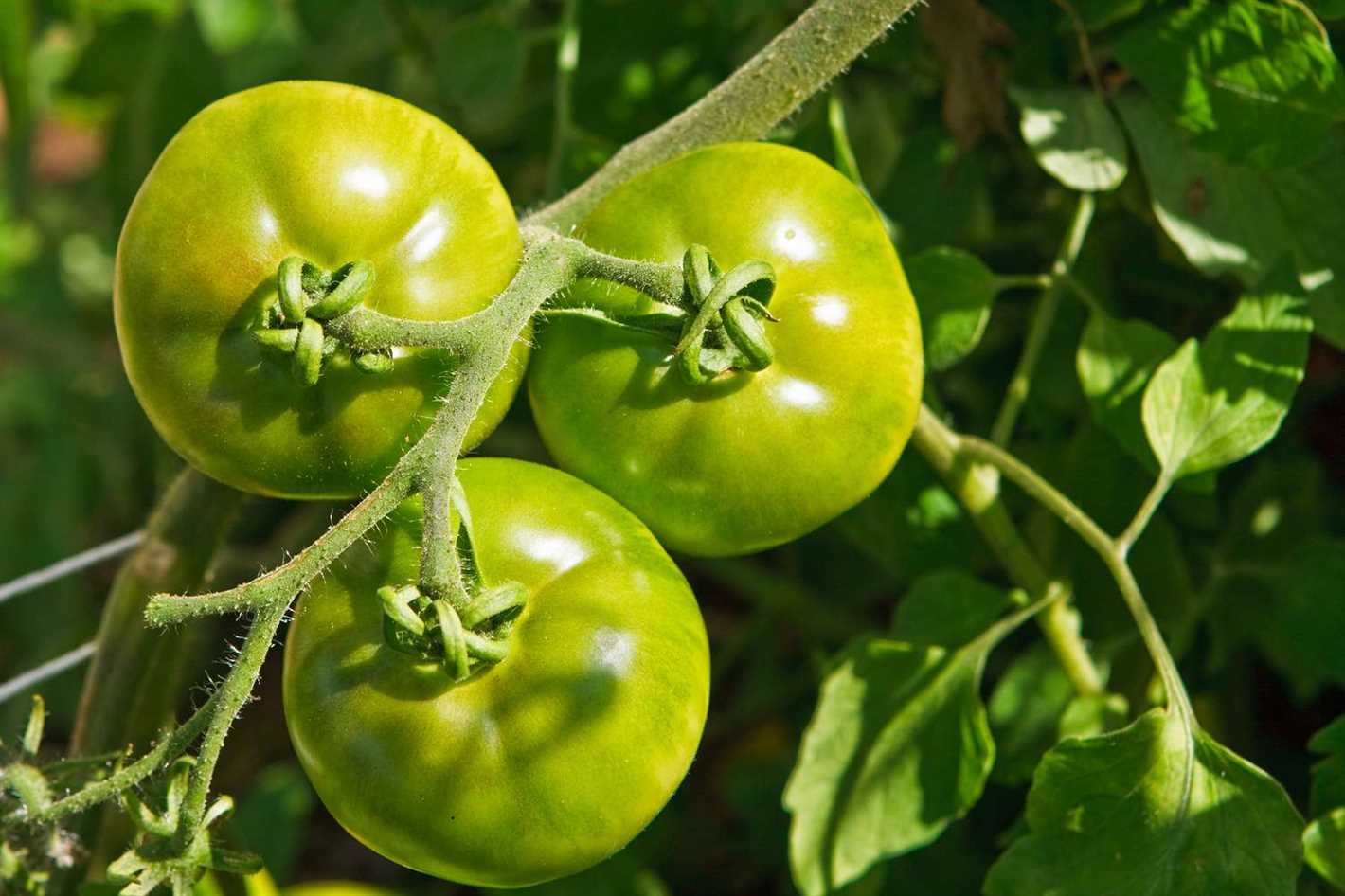
As the end of the tomato growing season approaches, you may find yourself with fruits that haven’t fully ripened. Fortunately, there are several techniques you can use to accelerate the ripening process and enjoy your fresh tomatoes before they go to waste.
1. Bring in the Green Tomatoes
If a frost or cold weather is forecasted, it’s best to harvest any remaining green tomatoes and bring them indoors. Place the green tomatoes in a cool, dark place such as a basement or garage. Ensure they are not stacked on top of each other and have space to breathe.
2. Choose the Right Storage Location
When storing green tomatoes, it’s essential to select a location with the optimal conditions for ripening. A temperature of around 65 to 70 degrees Fahrenheit (18 to 21 degrees Celsius) is ideal for most varieties. Avoid areas with direct sunlight or excessive heat, as these can cause the tomatoes to ripen unevenly or spoil prematurely.
3. Utilize Ethylene Gas
Ethylene gas is a natural plant hormone that triggers the ripening process. To speed up tomato ripening, place a ripe banana, apple, or pear in the container with the green tomatoes. These fruits release ethylene gas and can help stimulate the ripening process.
4. Check Regularly for Ripe Tomatoes
Check on your green tomatoes regularly to identify any that have started to ripen. Once a tomato shows signs of color change and is just starting to become soft, it is ready for consumption. Harvest these tomatoes and allow the rest to continue ripening.
5. Enhance Ripening with Paper Bags
If you have only a few green tomatoes remaining and want to speed up the ripening process further, you can place them individually in paper bags. The bag traps the ethylene gas, concentrating it around the tomato and accelerating the ripening process. Keep an eye on the tomatoes and remove them from the bag as soon as they are fully ripe.
6. Use the Surrounding Ripeness Technique
If you have a ripe tomato or two, place the green tomatoes near them. Ripe tomatoes emit a higher concentration of ethylene gas, which can encourage the surrounding fruits to ripen more quickly.
7. Manage Proper Air Circulation
Adequate air circulation is essential for ensuring even ripening. Avoid overcrowding the ripening tomatoes and ensure they have enough space between them for air to circulate. This helps prevent molds or rot from forming and ensures the tomatoes ripen evenly.
8. Prune Excessive Foliage
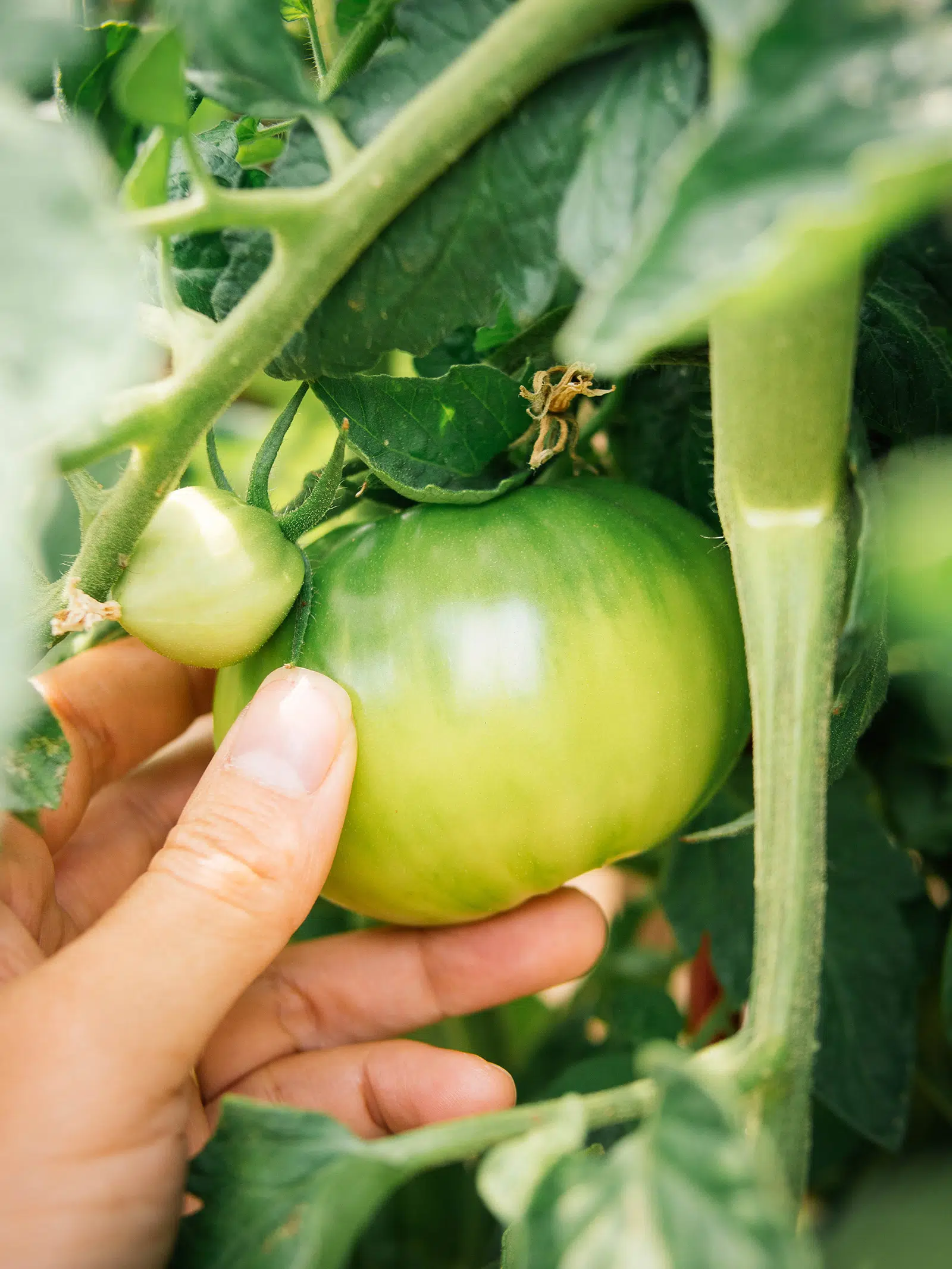
If you notice that the foliage of your tomato plants is preventing sunlight from reaching the remaining fruits, consider pruning excessive foliage. This will allow more sunlight to reach the tomatoes and promote faster ripening.
Conclusion
By following these tips, you can help accelerate the ripening of your tomatoes at the end of the season. Whether you bring green tomatoes indoors, utilize ethylene gas, or use other techniques, you can enjoy the fruits of your labor before the growing season comes to a close.
Enhancing Tomato Ripening Process on the Vine
Tomatoes are a popular fruit that many gardeners enjoy growing in their gardens. The taste and texture of a fully ripened tomato are unmatched, and it’s always a satisfying feeling when you can harvest your own homegrown tomatoes. However, sometimes tomatoes may take longer to ripen on the vine, especially towards the end of the season when the weather starts to cool down. Here are some tips to enhance the tomato ripening process on the vine:
1. Choose the Right Variety
When selecting tomato plants for your garden, consider choosing varieties that have a shorter maturity period. These varieties are more likely to ripen earlier and will work well in colder climates or for late-season planting.
2. Provide Adequate Sunlight
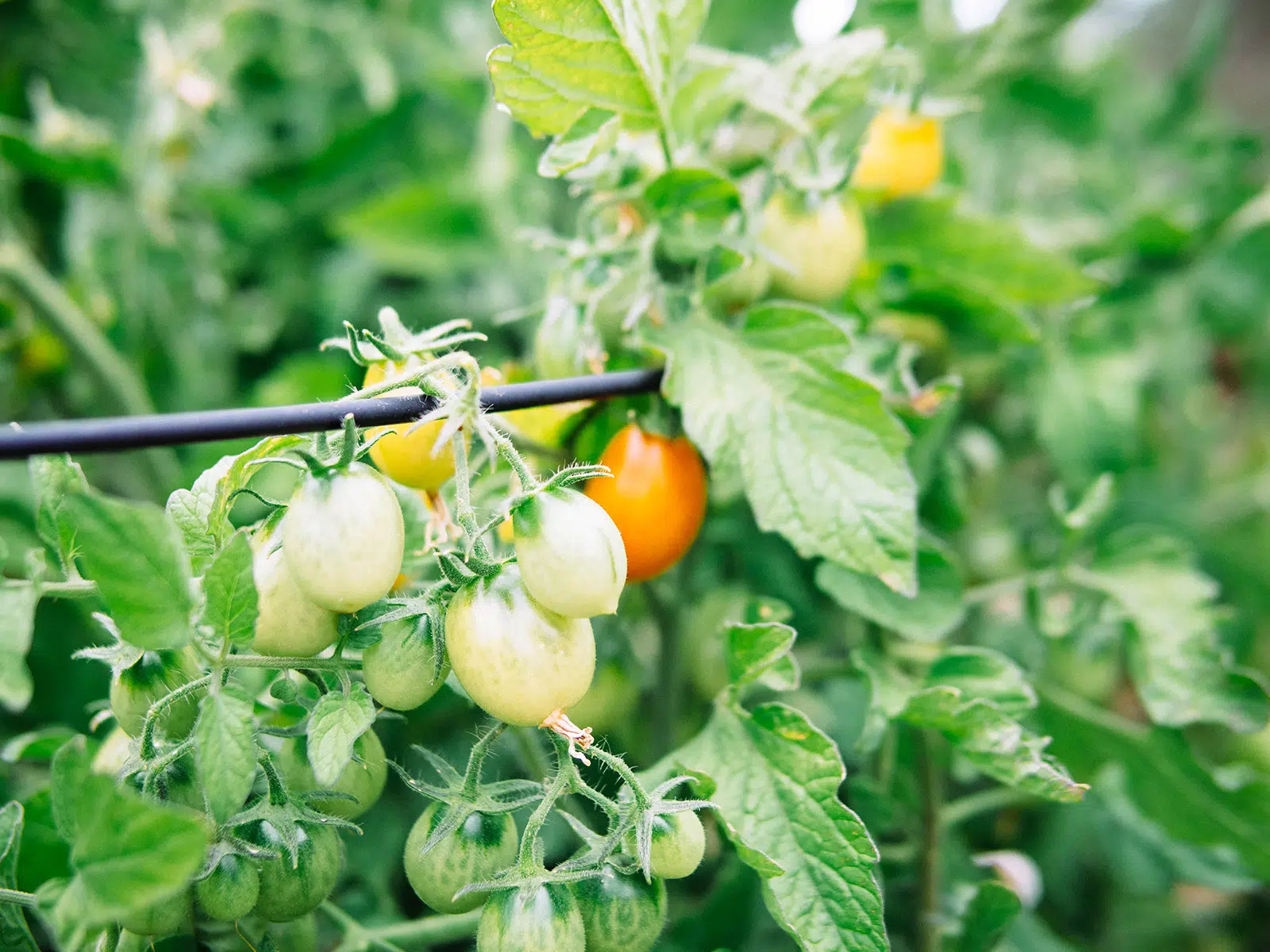
Tomatoes require a minimum of 6-8 hours of direct sunlight per day to ripen properly. Make sure that your tomato plants are in a location where they receive ample sunlight throughout the day.
3. Prune the Plants
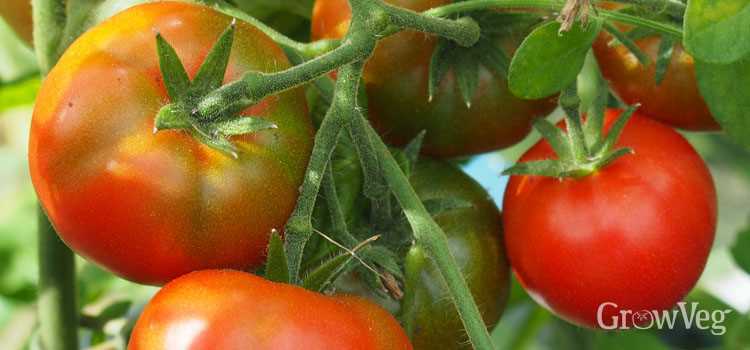
Pruning your tomato plants can help to redirect energy towards fruit ripening. Remove any suckers that develop in the leaf axils or non-fruiting branches. This will allow the plant to focus energy on the existing fruits, promoting their ripening process.
4. Monitor Watering
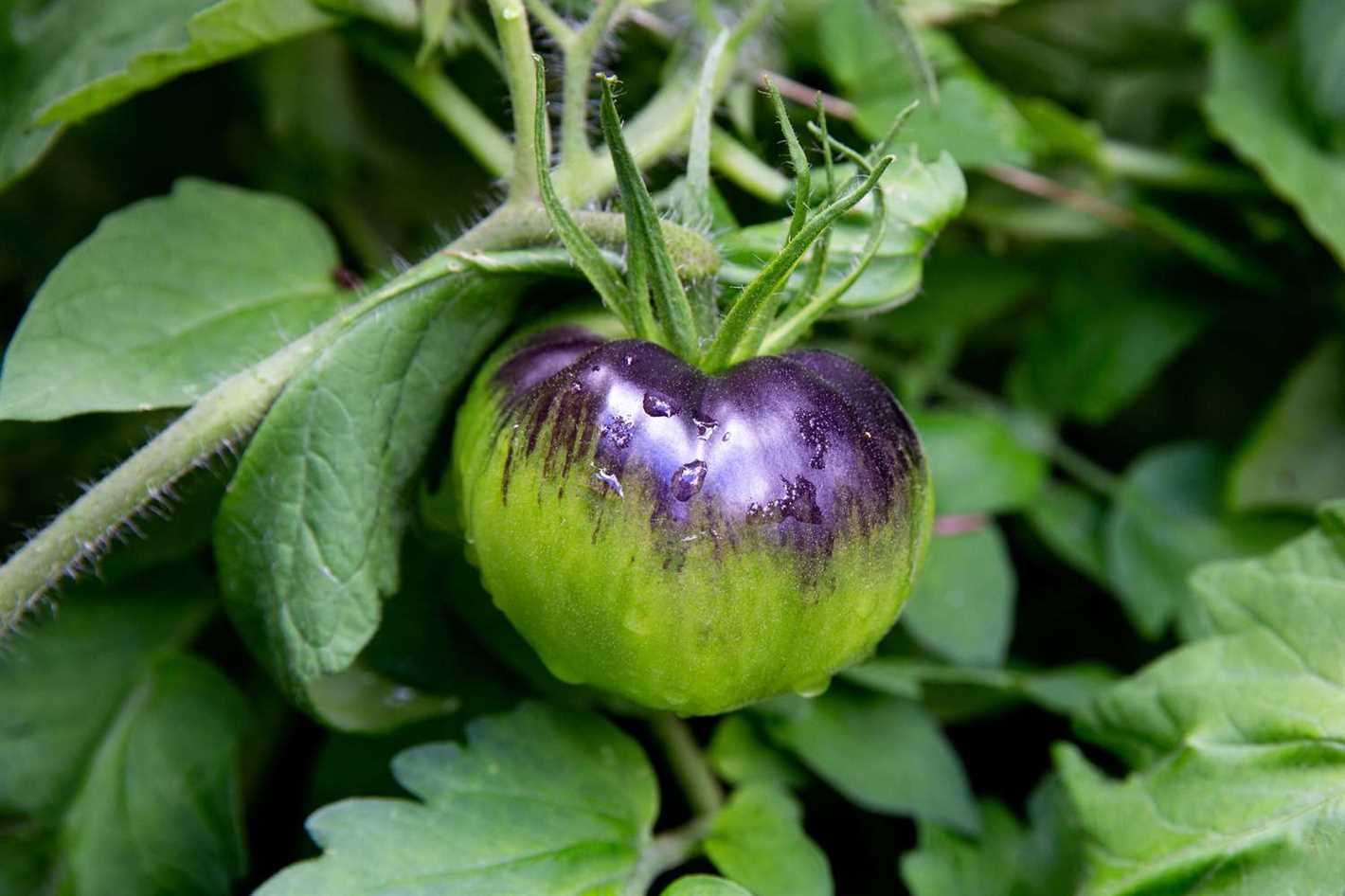
Avoid overwatering your tomato plants, as excessive moisture can slow down the ripening process. Keep the soil consistently moist, but not waterlogged. Monitor the soil moisture levels and adjust watering accordingly.
5. Use Organic Fertilizers
Using organic fertilizers can provide essential nutrients to your tomato plants, which can enhance the ripening process. Apply a balanced organic fertilizer, such as compost or aged manure, according to the manufacturer’s instructions.
6. Remove Excess Foliage
Removing excess foliage or leaves that shade the ripening tomatoes can improve air circulation and sunlight exposure, speeding up the ripening process. However, be careful not to remove too many leaves, as they play a vital role in the plant’s overall health and development.
7. Harvest Partially Ripe Tomatoes
If the weather turns cold and frost is imminent, consider harvesting partially ripe tomatoes and allowing them to ripen off the vine. Wrap the tomatoes in newspaper or place them in a cardboard box, and store them in a cool, dark location. Check on them regularly and remove any rotten tomatoes to prevent spoilage.
By following these tips, you can enhance the tomato ripening process on the vine and enjoy a bountiful harvest of ripe, delicious tomatoes.
Using Ethylene Gas to Accelerate Tomato Ripening
Ethylene gas is a natural plant hormone that plays a crucial role in the ripening process of tomatoes. By exposing tomatoes to ethylene gas, you can speed up the ripening process and enjoy ripe, juicy tomatoes even at the end of the season.
Methods of Ethylene Gas Application:
There are several methods you can use to apply ethylene gas to your tomatoes:
- Tomato Bags: Place unripe tomatoes in a paper bag or a plastic bag with a ripe banana or apple. These fruits release ethylene gas as they ripen, which helps accelerate the ripening of the tomatoes. Seal the bag and leave it undisturbed for 24-48 hours to allow the gas to work its magic.
- Ethylene Gas Generators: Ethylene gas generators release controlled amounts of ethylene gas into an enclosed space, such as a greenhouse or a ripening room. This method is commonly used by commercial growers to accelerate the ripening of large quantities of tomatoes.
- Commercial Ethylene Products: There are commercially available products that contain concentrated ethylene gas. These products are specifically designed to accelerate the ripening of fruits, including tomatoes. Follow the instructions provided by the manufacturer for safe and effective use.
Precautions when using Ethylene Gas:
While ethylene gas can be a valuable tool for accelerating tomato ripening, it is important to take precautions to ensure safe and effective use:
- Always follow the instructions provided by the ethylene gas product manufacturer.
- Use ethylene gas in a well-ventilated area to prevent the accumulation of high concentrations.
- Avoid direct contact with ethylene gas, as it can be harmful to human health.
- If using ethylene gas generators, monitor the concentration of ethylene gas regularly to ensure it remains within safe levels.
- When using tomato bags, do not overcrowd the bag to allow proper circulation of ethylene gas.
By using ethylene gas to accelerate tomato ripening, you can enjoy fully ripe and flavorful tomatoes, even when the growing season is coming to an end.
Proper Nutrition to Hasten Tomato Ripening
Proper nutrition plays a crucial role in the ripening process of tomatoes. By providing the right nutrients at the right time, you can help speed up the ripening of your tomatoes and ensure a bountiful harvest. Here are some important tips to consider:
1. Balanced Fertilization
Tomatoes require a balanced supply of nutrients, including nitrogen, phosphorus, and potassium, to support their growth and development. Use a balanced fertilizer with equal or slightly higher levels of phosphorus and potassium compared to nitrogen. Avoid excessive nitrogen, as it can promote vegetative growth at the expense of fruit ripening.
2. Phosphorus Boost
Adding a phosphorus-rich fertilizer or bone meal to the soil around tomato plants can help promote ripening. Phosphorus aids in the development of fruits and enhances the conversion of starches to sugars, resulting in sweeter and tastier tomatoes.
3. Compost and Organic Matter
Enriching the soil with compost or organic matter before planting can provide a steady supply of nutrients to your tomato plants. Organic matter improves soil structure, water-holding capacity, and nutrient availability, ultimately promoting healthy growth and faster ripening.
4. Calcium Supplement
Calcium deficiency in tomatoes can lead to blossom end rot, a condition that causes the bottoms of the fruits to rot. To prevent this, provide an adequate supply of calcium to your plants by using a calcium-rich fertilizer or adding crushed eggshells to the soil. This will help ensure proper fruit development and ripening.
5. Liquid Fertilizers
Applying liquid fertilizers, such as fish emulsion or seaweed extract, can provide an instant nutrient boost to your tomato plants. These fertilizers are quickly absorbed by the plants, promoting faster growth and ripening.
6. Regular Watering
Consistent and regular watering is essential for tomato plants to absorb and transport nutrients efficiently. Water your plants deeply, allowing the soil to dry slightly between waterings. Avoid overwatering, as it can lead to root rot and slow down ripening.
7. Mulching
Using organic mulch, such as straw or wood chips, around tomato plants helps conserve soil moisture, regulate soil temperature, and suppress weed growth. Mulching also enriches the soil as it breaks down, providing an additional source of nutrients for the plants.
8. Pruning and Proper Plant Spacing
Proper pruning and spacing of tomato plants allow for better airflow and light penetration, reducing the risk of fungal diseases and promoting faster ripening. Remove suckers and overcrowded branches to enhance air circulation and ensure each plant receives adequate sunlight.
By following these tips and providing your tomato plants with the proper nutrition, you can help hasten the ripening process and enjoy delicious homegrown tomatoes in no time.
Providing Ideal Environmental Conditions for Ripe Tomatoes
Temperature
Tomatoes require warm temperatures to ripen properly. The ideal temperature range for ripening tomatoes is between 68°F (20°C) and 77°F (25°C). Temperatures below 55°F (13°C) can hinder the ripening process. If the temperatures in your area are consistently lower than the ideal range, consider using methods such as covering the plants with a plastic sheet or using a greenhouse to create a warmer environment.
Sunlight
Tomatoes need plenty of sunlight to ripen. Make sure your tomato plants receive at least 6-8 hours of direct sunlight each day. If your plants are shaded by nearby trees or structures, consider pruning or relocating them to a sunnier spot. Additionally, you can use reflective material or white mulch to help redirect sunlight onto the plants and increase their exposure to light.
Air Circulation
Proper air circulation is important for tomato ripening. Good airflow helps prevent diseases and ensures that the fruits receive sufficient oxygen. Ensure that your tomato plants are properly spaced to allow air to flow freely between them. If you notice overcrowding, thin out the plants or prune the branches to improve air circulation. Avoid excessive watering, as wet foliage can promote disease and hinder the ripening process.
Humidity
Tomatoes prefer moderate humidity levels for ripening. High humidity can promote the growth of fungal diseases, while low humidity can cause the fruits to dry out and become leathery. Aim for a relative humidity level between 50% and 70%. If the humidity in your area is too high, consider providing additional ventilation or using a dehumidifier if growing tomatoes indoors.
Protection from Extreme Weather
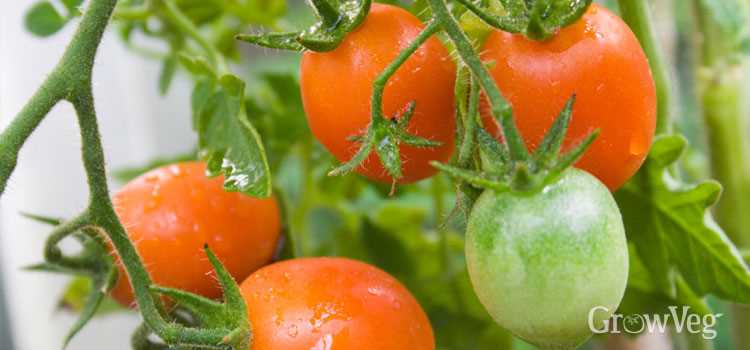
Extreme weather conditions such as heavy rain, strong winds, or hail can damage ripening tomatoes. It is important to protect your plants from these elements to ensure the fruits ripen properly. Use stakes, cages, or trellises to support the plants and prevent them from bending or breaking under the weight of the fruits. Consider using row covers or garden fabric to provide protection against hail or strong winds. If heavy rains are forecasted, you can cover the plants with plastic sheeting or move potted tomatoes to a sheltered area temporarily.
Regular Harvesting
To promote the ripening of tomatoes, it is important to harvest them regularly. Once the fruits start showing signs of ripening, such as changing color and becoming slightly soft to the touch, pick them from the vine. Leaving overripe or rotting tomatoes on the plant can attract pests and diseases, and it diverts energy away from the remaining fruits.
Storage
If you have harvested unripe tomatoes and want to ripen them indoors, store them in a cool, dry place with temperatures around 65°F (18°C) and relatively high humidity. Placing them in a paper bag with an apple or a banana can help speed up the ripening process. Check on them regularly and remove any spoiled or overripe tomatoes to prevent them from affecting the others.
By providing ideal environmental conditions such as proper temperature, sunlight, air circulation, humidity, and protection from extreme weather, you can ensure that your tomatoes ripen properly and have the best flavor and texture.
Harvesting Tomatoes at the Right Time for Faster Ripening
Harvesting tomatoes at the right time is crucial for faster ripening. By picking tomatoes at the correct stage of ripeness, you can ensure that they reach their peak flavor and color off the vine. Here are some tips to help you know when to harvest your tomatoes:
1. Color
- Observe the color of the tomatoes. Depending on the variety, ripe tomatoes may be red, orange, pink, or even yellow.
- Look for a uniform color throughout the tomato, without any green areas.
- Avoid picking tomatoes that are completely green or have a lot of green areas, as they will take longer to ripen.
2. Firmness
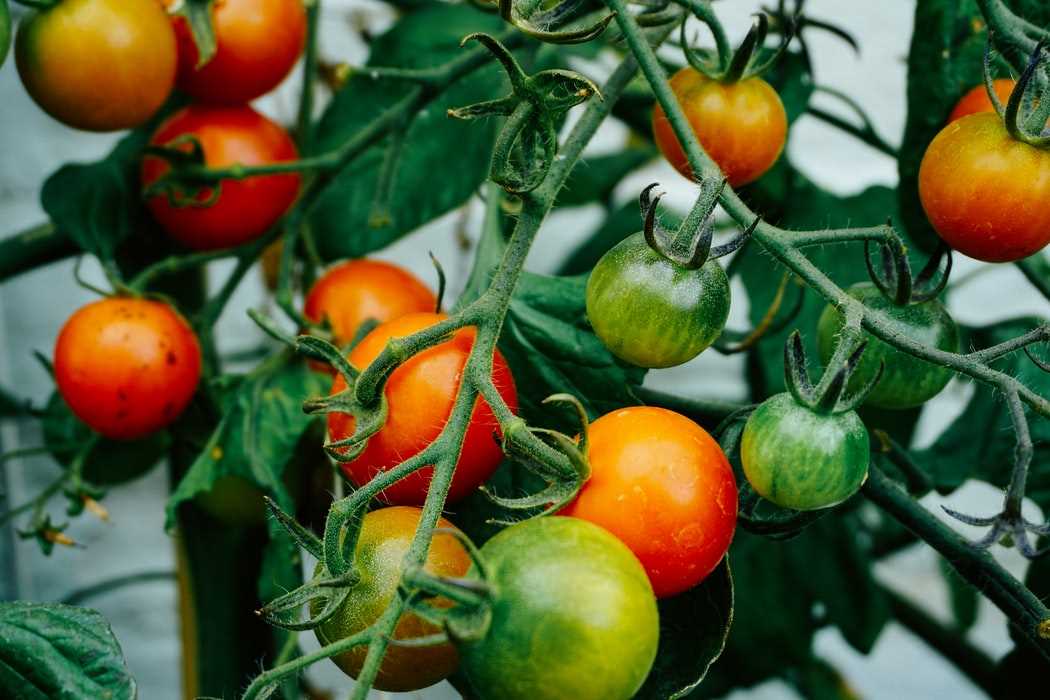
- Gently squeeze the tomatoes to check their firmness. Ripe tomatoes should feel firm but not too soft.
- If the tomatoes are too soft, they may be overripe and prone to rotting.
- If the tomatoes are too firm, they are not yet fully ripe and may need more time on the vine.
3. Stem Connection
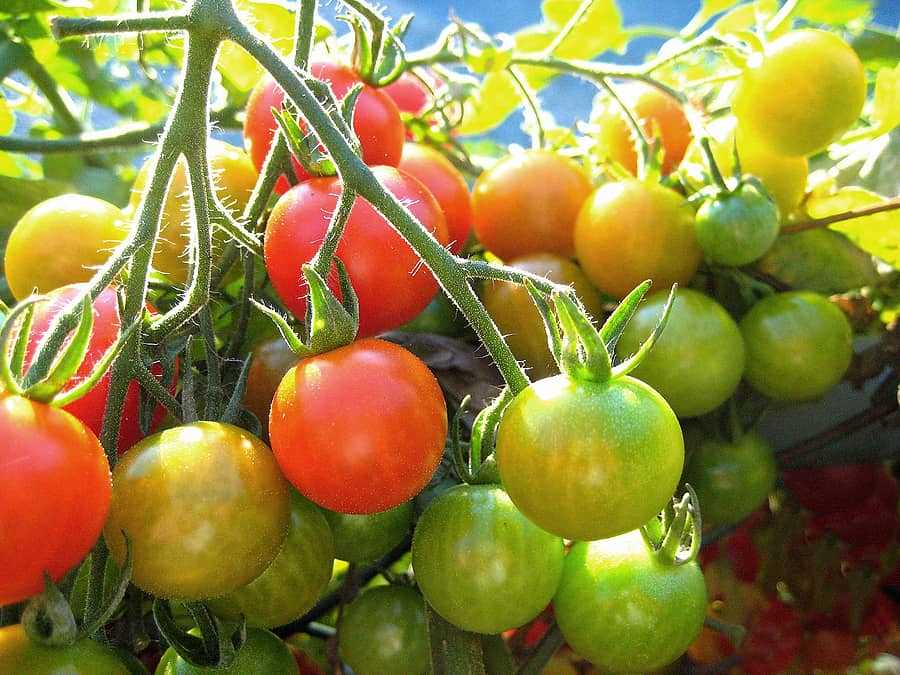
- Examine the stem connection of the tomatoes. Ripe tomatoes should easily detach from the vine with a gentle twist or pull.
- If the tomatoes resist detaching, they are not yet ready for harvest. Wait a few more days and check again.
4. Flavor
- While flavor can be subjective, ripe tomatoes should have a sweet and tangy taste.
- Give a taste test to a few tomatoes before harvesting the entire crop.
- If the flavor is bland or acidic, the tomatoes may need more time to ripen.
Once you have determined that the tomatoes are ready for harvest, gently twist or cut the stem above the fruit, taking care not to damage the tomatoes. Place the harvested tomatoes in a single layer on a flat surface, away from direct sunlight. This will allow them to continue ripening evenly.
Remember, tomatoes will continue to ripen after harvest, so monitor them closely and consume them as they reach your desired level of ripeness.
Using Paper Bags to Speed Up Tomato Ripening Off the Vine
If you have picked your tomatoes from the vine and they are still not fully ripe, you can use a simple trick to speed up the ripening process. By placing the tomatoes in paper bags, you create a controlled environment that encourages the production of ethylene gas, a natural plant hormone responsible for ripening.
Here is a step-by-step guide on using paper bags to speed up tomato ripening:
- Start by selecting tomatoes that are at least partially ripe. Avoid using green, unripe tomatoes as they may not ripen properly.
- Place the selected tomatoes in a clean paper bag. Make sure to leave enough space between the tomatoes so that air can circulate.
- Add a ripe banana or apple to the bag. These fruits produce high levels of ethylene gas, which will help accelerate the ripening process.
- Close the bag loosely, leaving a small opening for air to circulate. This will prevent excessive humidity build-up and potential mold growth.
- Store the bag of tomatoes in a cool, dark place, such as a pantry or cabinet. Avoid placing them in direct sunlight or near sources of heat.
- Check on the tomatoes daily to monitor their ripening progress. This will help you determine when they are fully ripe and ready to be used.
- Once the tomatoes have reached the desired ripeness, remove them from the bag and store them in the refrigerator to extend their shelf life.
Note: This method may take a few days to a week, depending on the initial ripeness of the tomatoes and the environmental conditions. It is important to regularly check on the tomatoes to prevent overripening or spoilage.
Benefits of using paper bags:
- Quickens the ripening process without compromising the flavor or texture of the tomatoes.
- Helps to preserve the tomatoes’ natural sweetness and juiciness.
- Provides a convenient and cost-effective solution to ripen tomatoes off the vine.
By using paper bags, you can enjoy perfectly ripe tomatoes even after the end of the growing season. It’s a simple and effective way to make the most out of your tomato harvest!
Utilizing Ethylene-Producing Fruits to Ripen Tomatoes After Harvest
Once you have harvested your tomatoes, there are several methods you can use to speed up the ripening process. One effective way is to utilize ethylene-producing fruits, which release a natural plant hormone that promotes ripening.
Here are some steps you can take to use ethylene-producing fruits:
- Select ripe fruits that produce high levels of ethylene, such as apples, bananas, and avocados.
- Place the unripe tomatoes and the ethylene-producing fruits together in a paper bag or airtight container. Make sure the fruits are not touching each other directly.
- Seal the bag or container and leave it at room temperature. This will allow the ethylene gas to surround the tomatoes and initiate the ripening process.
- Check the tomatoes daily for ripeness. Depending on their initial stage of ripeness, it may take anywhere from a few days to a couple of weeks for them to fully ripen.
- Once the tomatoes have reached the desired level of ripeness, remove them from the bag or container and store them in the refrigerator to prolong their freshness.
It’s important to note that using ethylene-producing fruits to ripen tomatoes after harvest works best when the tomatoes are already in the later stages of ripening. If the tomatoes are still completely green, this method may not be as effective.
In conclusion, utilizing ethylene-producing fruits can be a handy technique to expedite the ripening process of tomatoes after they have been harvested. With a bit of patience and the help of ethylene, you can enjoy fully ripened tomatoes even after the end of the growing season.
Storing Tomatoes Properly to Promote Quick Ripening
When it comes to ripening tomatoes, proper storage is crucial. Follow these tips to store your tomatoes and promote quick ripening:
- Separate ripe and unripe tomatoes: It’s important to separate ripe tomatoes from unripe ones. Ripe tomatoes produce ethylene gas, a plant hormone that helps in the ripening process. Placing ripe tomatoes with unripe ones can speed up the ripening process.
- Store tomatoes at room temperature: Tomatoes ripen best in a warm environment. Avoid refrigerating them as it can slow down the ripening process. Instead, keep them at room temperature where they will continue to ripen naturally.
- Avoid direct sunlight: While tomatoes need warmth to ripen, direct sunlight can cause over-ripening and spoilage. Place them in a cool, shaded area to prevent them from getting too soft or mushy.
- Use a paper bag or a cardboard box: To speed up the ripening process, place tomatoes in a paper bag or a cardboard box. These containers help trap the ethylene gas emitted by the tomatoes and promote faster ripening.
- Add a ripe banana or apple: Adding a ripe banana or apple to the bag or box with the tomatoes can further enhance the ripening process. Bananas and apples also release ethylene gas, which accelerates ripening.
- Check and rotate tomatoes: Regularly check your stored tomatoes for ripeness. Remove any fully ripened tomatoes to prevent them from spoiling the others. Also, rotate the tomatoes to ensure even exposure to warmth and air.
- Consider the ripeness of the tomatoes: If you have a mix of ripe and unripe tomatoes, consider the level of ripeness you desire. You can store them together if you want to ripen them gradually over a few days, or keep them separate for individual ripening control.
- Check for signs of ripeness: To determine if a tomato is ripe, gently press it. If it gives slightly under pressure and has a fragrant smell, it is likely ready to eat or will ripen soon.
By following these storage tips, you can promote quick ripening of your tomatoes and enjoy them at their peak flavor.
“Question-Answer”
How can I speed up tomato ripening on the vine?
To speed up tomato ripening on the vine, you can try a few methods. Firstly, make sure to remove any leaves that are shading the fruit, as this will allow more sunlight to reach the tomatoes and accelerate the ripening process. Additionally, you can prune your tomato plant by removing any new flowers or suckers. This will divert the plant’s energy towards the existing fruit, helping them to ripen faster. Finally, you can also provide your tomato plant with a boost of nutrients by applying a fertilizer high in potassium, which will promote fruit ripening.
What can I do to speed up tomato ripening after harvest?
If you have picked tomatoes that are still slightly green and want to speed up their ripening process, there are a few techniques you can try. First, you can place the tomatoes in a paper bag or a cardboard box with a ripe banana or apple. These fruits produce ethylene gas, which speeds up the ripening process of tomatoes. Make sure to store the bag or box in a warm, dark place, such as a pantry or a cupboard. Alternatively, you can place the tomatoes in a sunny windowsill, as exposure to sunlight can also help to ripen them faster. Just make sure to rotate the tomatoes regularly so that all sides receive equal sunlight.
Can I use a tomato ripening spray to speed up ripening?
Yes, you can use a tomato ripening spray to speed up the ripening process. These sprays typically contain ethylene gas, which is a natural hormone produced by fruits to trigger ripening. When you apply the spray to green tomatoes, it helps to initiate the ripening process and can result in faster color development and overall ripening. However, it’s important to follow the instructions on the spray bottle carefully, as different products may have different application methods and recommended usage.
How long does it usually take for tomatoes to ripen on the vine?
The time it takes for tomatoes to ripen on the vine can vary depending on various factors, such as the tomato variety, weather conditions, and care practices. Generally, it takes around 20 to 30 days from the time the tomato flower is fertilized to when the fruit is fully ripened. However, this can be shorter or longer depending on the specific circumstances. For example, certain tomato varieties may have shorter or longer ripening times, and adverse weather conditions, such as cool temperatures or lack of sunlight, can slow down the ripening process.
Why are my tomatoes taking so long to ripen?
There can be several reasons why your tomatoes are taking longer than expected to ripen. One possible reason is that the tomato variety you are growing has a longer ripening period. Some tomato varieties naturally take longer to ripen compared to others. Another reason could be unfavorable weather conditions, such as cool temperatures or a lack of sunlight. Tomatoes require warmth and sunlight to ripen properly. Additionally, if you have overcrowded your tomato plants, this can also slow down the ripening process. Crowding can lead to reduced airflow and sunlight penetration, which can hinder ripening.







